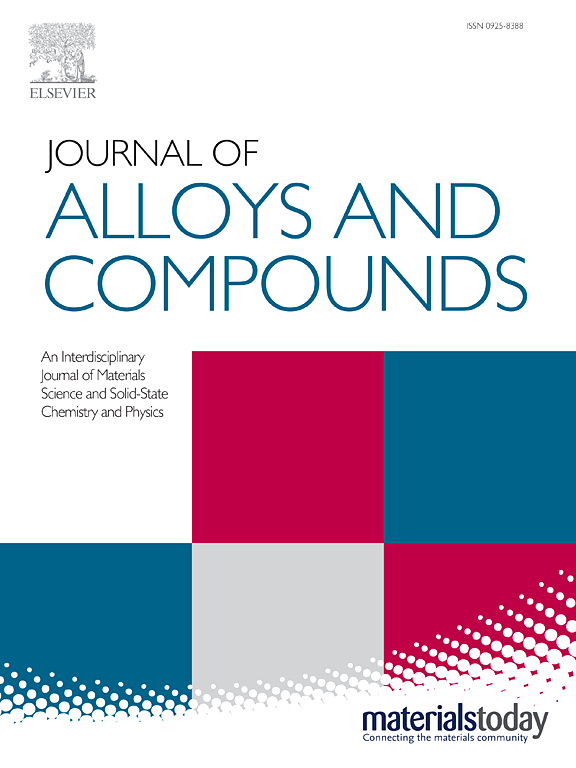IF 5.8
2区 材料科学
Q2 CHEMISTRY, PHYSICAL
引用次数: 0
摘要
通过增材制造(AM)制备的镍钛合金通常具有粗大的柱状晶粒,拉伸超弹性、强度和延展性较差,严重影响了零件的合格性和目标应用。在这项工作中,我们采用激光工程净成形(LENS)技术,通过周期性交替的加工参数,制造出具有薄片结构的镍钛合金,这种薄片结构由细小的近等轴晶粒、柱状晶粒和高密度位错组成。这种策略可以将柱状晶粒向等轴晶粒(CET)转变过程中产生的等轴晶粒部分保留在沉积层顶部,并中断 AM-ed NiTi 合金中柱状晶粒的外延生长。结果表明,具有层状结构的镍钛合金具有出色的强度和延展性组合,拉伸强度为 649 兆帕,应变为 17.5%,最大恢复应变为 5.3%,20 次循环后的稳定恢复应变为 3.1%。我们的发现可能会增加镍钛合金微结构和性能组合的可调范围,并为 AM 形状记忆合金的微结构改性和增强提供了新思路。本文章由计算机程序翻译,如有差异,请以英文原文为准。
NiTi Alloys with Simultaneous Equiaxed-Grain Strength and Columnar-Grain Ductility Manipulated by Direct Energy Deposition
NiTi alloys prepared by additive manufacturing (AM) often have coarse columnar grains showing poor tensile superelasticity, strength, and ductility, significantly impairing part qualification and targeted applications. In this work, we used laser-engineered net shaping (LENS) to fabricate NiTi alloys with lamellar structures which consist of fine nearly equiaxed grains, columnar grains, and high-density dislocations, through periodically alternating processing parameters. This strategy can partially keep the equiaxed grains produced by the transformation from columnar grains to equiaxed grains (CET) at the top of the deposited layer, and interrupt the epitaxial growth of columnar grains in AM-ed NiTi alloys. The results show that NiTi alloys with lamellar structures exhibit an excellent combination of strength and ductility with a tensile strength of 649 MPa strain of 17.5%, a maximum recovery strain of 5.3%, and a stable recovery strain of 3.1% after 20 cycles. Our findings may increase the range of adjustable microstructures and combinations of properties in NiTi alloys and provide a new idea for microstructure modification and reinforcement of AM shape memory alloy.
求助全文
通过发布文献求助,成功后即可免费获取论文全文。
去求助
来源期刊

Journal of Alloys and Compounds
工程技术-材料科学:综合
CiteScore
11.10
自引率
14.50%
发文量
5146
审稿时长
67 days
期刊介绍:
The Journal of Alloys and Compounds is intended to serve as an international medium for the publication of work on solid materials comprising compounds as well as alloys. Its great strength lies in the diversity of discipline which it encompasses, drawing together results from materials science, solid-state chemistry and physics.
 求助内容:
求助内容: 应助结果提醒方式:
应助结果提醒方式:


